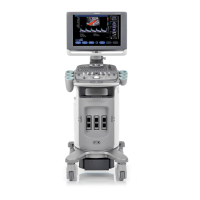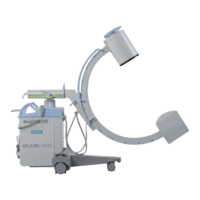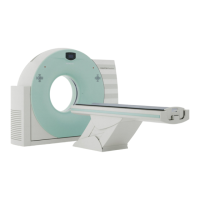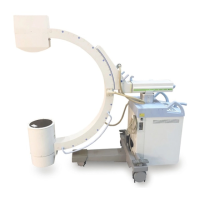Rapidlab 1200 Operator’s Guide: System Overview and Intended Use 1-63
02087462 Rev. V
Physiologic Shunt
The physiologic shunt [ sp/ t(T)] is that portion of the cardiac output entering
the left side of the heart that does not perfect
ly respire with the alveoli. The shunt
calculation represents the best available means of delineating the extent to which
the pulmonary system contributes to hypoxemia.
9
The system determines the physiologic shunt using the following equation:
sp/ t = [(ctO
2
(c)–ctO
2
(a)) / (ctO
2
(a- ) + ctO
2
(c)–ctO
2
(a))] × 100
where
ctO
2
(c) = [OBF x tHb × (1–FCOHb–FMetHb)] + (0.00314 × A)
A = [(F
I
O
2
/100) × (pAtm–pH
2
O)]–{pCO
2
(T) × [1.25–(0.25 × F
I
O
2
/100)]}
pH
2
O = 10
[(0.0244 x temp) + 0.7655]
+ 0.4
and the (
) in ctO
2
(a- ) is for a mixed venous sample.
NOTE: If the F
I
O
2
value is not at least 40, the shunt cannot be calculated.
OBF is the oxygen binding factor. The sys
tem uses the default value of 1.39, or
whatever value is entered as the default value in Setup.
Estimated Shunt
Pulmonary artery blood gases are not always readily available, but a need to
determine changes in the physiologic shunt may still exist. The best alternative
method for reflecting changes in the physiologic shunt is the estimated shunt
[
sp/ t(est,T)] value, which is applicable to most hypoxemic patients with
cardiovascular stability.
9
The system determines the estimated shunt using the following equation:
sp/ t(est) = [(ctO
2
(c)–ctO
2
(a)) / ((ctO
2
(a- ), entered) + ctO
2
(c)–ctO
2
(a))] ×
100
where
ctO
2
(c) = [OBF × tHb × (1–FCOHb–FMetHb)] + (0.00314 × A)
A = [(F
I
O
2
/100) × (pAtm–pH
2
O)]–{pCO
2
(T) × [1.25–(0.25 × F
I
O
2
/100)]}
pH
2
O = 10
[(0.0244 x temp) + 0.7655]
+ 0.4
For ctO
2
(a- ) entered, the system uses the default value of 3.5 mL/dL, or
whatever value is entered as the default value
in Setup.

